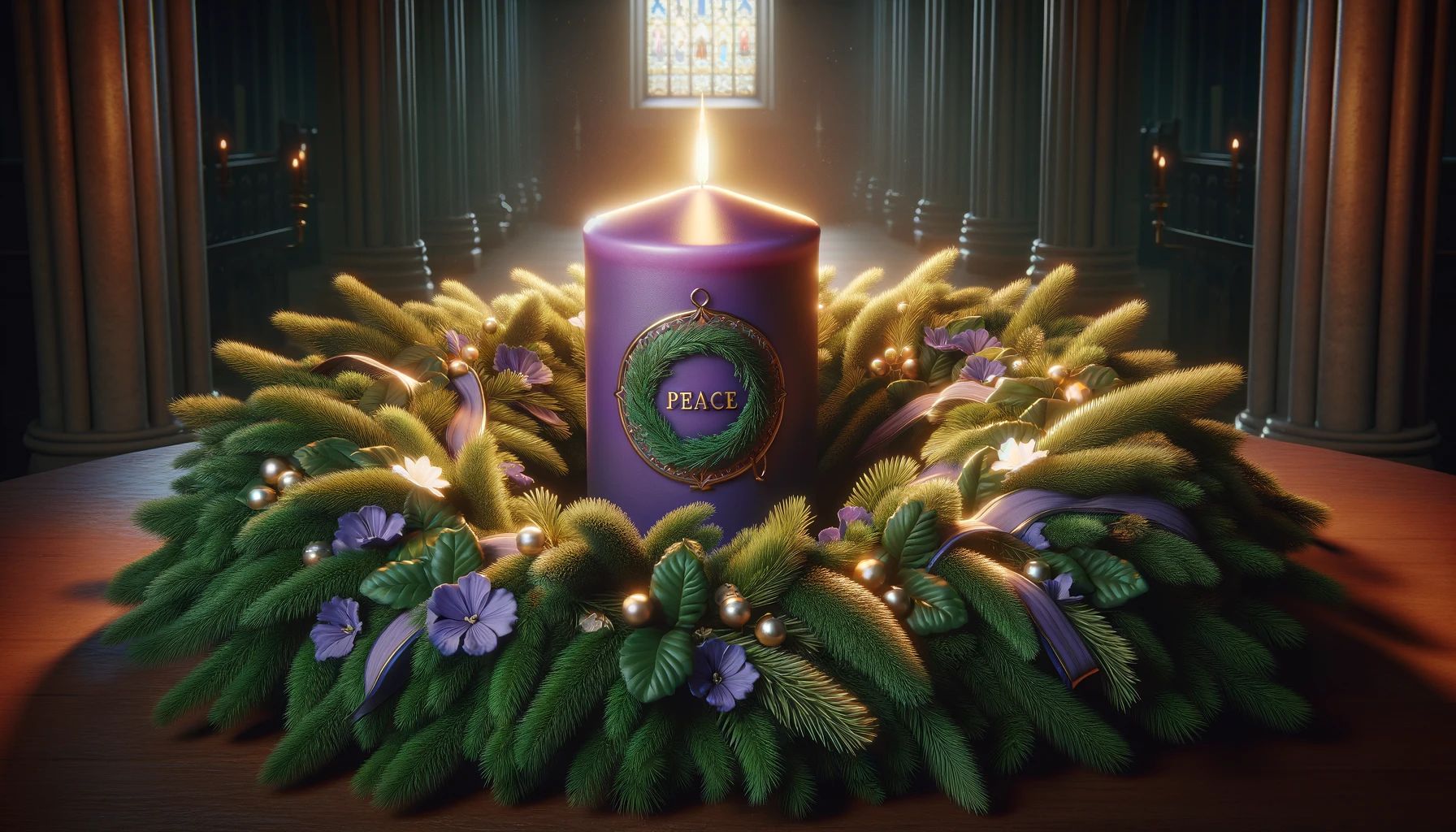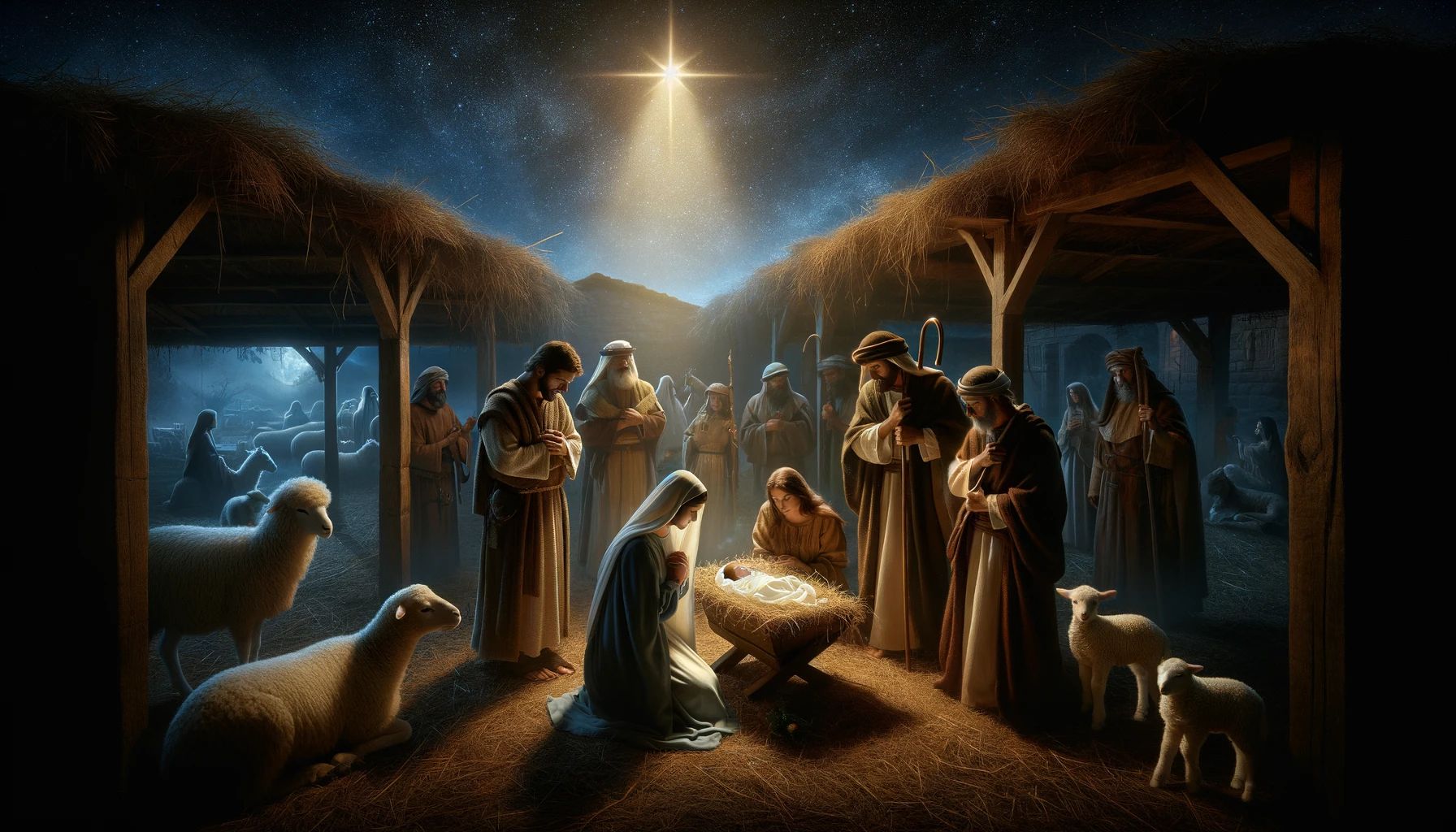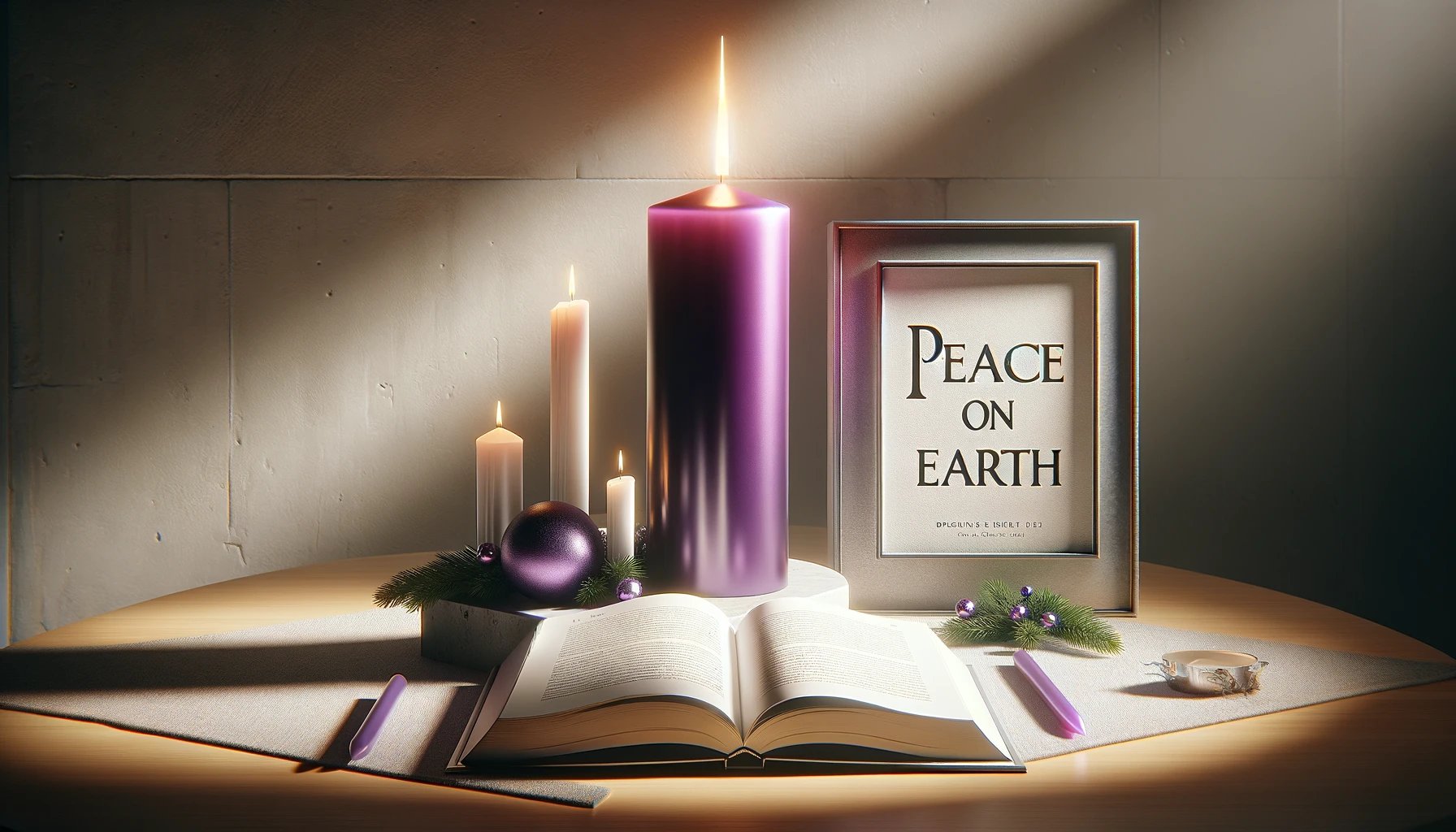Home>Special Themes>What Does The Second Sunday Of Advent Symbolize


Special Themes
What Does The Second Sunday Of Advent Symbolize
Published: February 14, 2024
Peter Smith, Editorial Director at Christian.net, combines deep insights into faith, politics, and culture to lead content creation that resonates widely. Awarded for his contributions to religious discourse, he previously headed a major organization for religious communicators, enhancing dialogue on faith's societal impacts.
Discover the significance of the Second Sunday of Advent and its symbolism in the context of special themes. Uncover the deeper meaning behind this important observance.
(Many of the links in this article redirect to a specific reviewed product. Your purchase of these products through affiliate links helps to generate commission for Christian.net, at no extra cost. Learn more)
Table of Contents
Introduction
The Second Sunday of Advent is a significant occasion in the Christian liturgical calendar, marking the second of the four Sundays leading up to Christmas. This period of anticipation and preparation holds deep spiritual meaning for Christians worldwide, as it symbolizes the expectation of the birth of Jesus Christ. The observance of Advent dates back to the early centuries of the Christian church and continues to be a cherished tradition in many denominations today.
During this time, believers reflect on the profound significance of Christ's coming, not only as a historical event but also as a personal and future reality. The Second Sunday of Advent, in particular, holds its own unique symbolism and rituals that enrich the overall observance of this sacred season.
As we delve into the essence of the Second Sunday of Advent, we will uncover the rich symbolism and traditions associated with this pivotal day. From the lighting of the second Advent candle to the timeless customs passed down through generations, the Second Sunday of Advent encapsulates the essence of hope and preparation as the faithful eagerly await the celebration of the birth of Jesus Christ.
Read more: What Is The Second Sunday Of Advent
The Meaning of Advent
Advent, derived from the Latin word "adventus," meaning "coming" or "arrival," represents a period of expectant waiting and preparation for the celebration of the birth of Jesus Christ. This sacred season typically spans the four Sundays leading up to Christmas Day, serving as a time of spiritual reflection, anticipation, and joyful expectation for Christians around the world.
At its core, Advent embodies the dual nature of the Christian faith, encompassing both the historical anticipation of Christ's birth in Bethlehem and the future hope of His second coming. This duality infuses the season with profound significance, prompting believers to reflect on the past, present, and future implications of Christ's arrival.
The observance of Advent is characterized by various customs and traditions, including the lighting of Advent candles, the use of an Advent wreath, and the singing of hymns and carols that capture the spirit of anticipation and longing. These practices serve as poignant reminders of the overarching themes of hope, love, joy, and peace that define the Advent season.
Furthermore, the liturgical color associated with Advent, often purple or blue, symbolizes penitence, preparation, and royalty, underscoring the solemn yet hopeful nature of this period. The use of these colors in churches and homes reinforces the spiritual significance of Advent and visually communicates the themes of repentance, expectation, and the majesty of Christ.
In essence, Advent serves as a spiritual journey, guiding believers to pause, reflect, and rekindle their faith as they prepare to celebrate the birth of Jesus. It is a time of introspection, prayer, and renewed devotion, inviting individuals to embrace the profound message of hope and redemption embodied in the arrival of the long-awaited Messiah.
As the first candle is lit on the Advent wreath, signaling the beginning of this sacred season, the faithful embark on a collective pilgrimage of the heart, eagerly anticipating the fulfillment of God's promise and the dawning of a new era of salvation. This period of waiting is not merely a passive exercise but a deliberate and purposeful engagement with the timeless narrative of God's redemptive plan for humanity.
In summary, the meaning of Advent transcends mere historical commemoration; it encapsulates the enduring significance of Christ's birth, the transformative power of His presence in our lives, and the hopeful anticipation of His triumphant return. It is a season of profound spiritual significance, inviting believers to embrace the timeless message of Emmanuel, "God with us," and to prepare their hearts to receive the greatest gift of all— the gift of salvation through Jesus Christ.
The Second Sunday of Advent
The Second Sunday of Advent holds a special place within the liturgical calendar, signifying the progression of the Advent season and deepening the sense of anticipation for the coming celebration of Christ's birth. This pivotal day, marked by the lighting of the second Advent candle, serves as a poignant reminder of the enduring themes of hope and preparation that define this sacred season.
As the faithful gather in churches and homes around the world, the lighting of the second Advent candle on the wreath symbolizes the increasing brightness and hope emanating from the impending arrival of the Messiah. This act not only illuminates physical spaces but also kindles the spiritual fervor within individuals, prompting them to reflect on the profound significance of Christ's imminent birth.
The Second Sunday of Advent also marks a pivotal juncture in the liturgical readings and themes observed during this season. The scriptures and prayers chosen for this day often center on the themes of preparation, anticipation, and the proclamation of hope. These passages serve as a spiritual compass, guiding believers on a journey of introspection and expectation as they await the fulfillment of God's promise in the form of the long-awaited Savior.
Furthermore, the observance of the Second Sunday of Advent is characterized by a deepening sense of spiritual longing and readiness. It serves as a call to action, urging individuals to prepare their hearts and minds for the joyous celebration of Christ's birth. This preparation extends beyond the external trappings of the season to encompass a profound inner transformation, as believers seek to align their lives with the timeless message of hope and redemption heralded by the coming of Jesus Christ.
In many traditions, the Second Sunday of Advent is also associated with the theme of peace, symbolized by the lighting of the second Advent candle often referred to as the "Bethlehem Candle." This symbolic gesture underscores the profound peace that Christ's birth brings to the world and serves as a poignant reminder of the transformative power of God's love and grace.
As the faithful journey through the Advent season, the observance of the Second Sunday serves as a pivotal moment of reflection, renewal, and recommitment to the enduring message of hope and salvation. It is a time to pause, amidst the hustle and bustle of the holiday season, and realign one's priorities with the profound spiritual truths encapsulated in the birth of Jesus Christ.
In essence, the Second Sunday of Advent stands as a beacon of hope, guiding believers through the season of anticipation and preparing their hearts to receive the greatest gift of all— the gift of Emmanuel, "God with us." It serves as a poignant reminder of the enduring promise of God's love and the transformative power of Christ's birth, inviting individuals to embrace the profound message of hope and redemption as they eagerly await the celebration of Christmas.
Symbolism of the Second Sunday
The Second Sunday of Advent is rich in symbolism, encapsulating profound spiritual themes that resonate deeply with believers as they journey through this sacred season. At the heart of this symbolism lies the lighting of the second Advent candle, a poignant ritual that conveys layers of meaning and significance.
The lighting of the second Advent candle, often referred to as the "Bethlehem Candle," serves as a powerful symbol of peace and anticipation. As the flame flickers to life, it illuminates the path of spiritual preparation, casting a warm glow that symbolizes the increasing brightness and hope emanating from the impending arrival of the Messiah. This act of kindling the candle not only brightens physical spaces but also ignites the spiritual fervor within individuals, prompting them to reflect on the profound significance of Christ's imminent birth.
The Bethlehem Candle, specifically associated with the Second Sunday of Advent, serves as a poignant reminder of the tranquil yet transformative nature of Christ's coming. It symbolizes the profound peace that Christ's birth brings to the world, transcending earthly turmoil and ushering in a sense of divine serenity. This symbolism resonates deeply with believers, inviting them to embrace the restorative peace offered through the redemptive work of Jesus Christ.
Moreover, the act of lighting the second Advent candle represents a continuation of the journey of anticipation and preparation. It signifies a deepening sense of spiritual longing and readiness as believers align their hearts and minds with the timeless message of hope and redemption heralded by the coming of Jesus Christ. The increasing brightness of the candle serves as a visual representation of the growing anticipation and the imminent fulfillment of God's promise, infusing the season with a sense of eager expectation and joyous anticipation.
In essence, the symbolism of the Second Sunday of Advent, embodied by the lighting of the Bethlehem Candle, encapsulates the enduring themes of peace, hope, and preparation. It serves as a poignant reminder of the transformative power of Christ's birth and the profound peace that His presence brings to the world. As believers engage in this symbolic act, they are invited to embrace the timeless message of hope and redemption, preparing their hearts to receive the greatest gift of all— the gift of Emmanuel, "God with us."
This symbolism enriches the observance of the Second Sunday of Advent, infusing it with profound spiritual depth and inviting believers to embark on a journey of introspection, anticipation, and joyful expectation as they eagerly await the celebration of the birth of Jesus Christ.
Traditions and Celebrations
The observance of the Second Sunday of Advent is intertwined with a tapestry of cherished traditions and meaningful celebrations that enrich the spiritual journey of believers as they prepare for the joyous culmination of the Advent season. These traditions, passed down through generations, serve as poignant reminders of the enduring significance of Christ's birth and the timeless message of hope and redemption that it embodies.
One of the central traditions associated with the Second Sunday of Advent is the lighting of the second Advent candle, often referred to as the "Bethlehem Candle." This symbolic act, typically performed during a special church service or within the intimate setting of family gatherings, holds deep spiritual significance. As the flame of the Bethlehem Candle is kindled, it serves as a visual representation of the increasing brightness and hope emanating from the impending arrival of the Messiah. This act of illumination not only brightens physical spaces but also ignites the spiritual fervor within individuals, prompting them to reflect on the profound significance of Christ's imminent birth.
In addition to the lighting of the Advent candle, the Second Sunday of Advent is marked by the continuation of timeless customs that embody the spirit of anticipation and preparation. Families and communities often engage in the singing of traditional hymns and carols that capture the essence of the Advent season, infusing homes and churches with melodies of hope, joy, and longing. These musical expressions serve as a unifying force, binding individuals together in a shared journey of spiritual reflection and expectation.
Furthermore, the use of an Advent wreath, adorned with evergreen foliage and symbolic candles, is a cherished tradition that holds a central place in the observance of the Second Sunday of Advent. The circular shape of the wreath represents the eternal nature of God and the unending love He bestows upon His people. Each element of the wreath, including the candles and greenery, carries profound symbolism, inviting believers to contemplate the enduring themes of hope, love, joy, and peace as they progress through the Advent season.
As the faithful gather to observe the Second Sunday of Advent, the spirit of anticipation and preparation permeates the atmosphere, creating a sense of communal longing and joyful expectation. The traditions and celebrations associated with this sacred day serve as poignant reminders of the enduring promise of God's love and the transformative power of Christ's birth. They invite believers to embrace the profound message of hope and redemption, preparing their hearts to receive the greatest gift of all— the gift of Emmanuel, "God with us."
In essence, the traditions and celebrations of the Second Sunday of Advent encapsulate the rich tapestry of customs and rituals that deepen the spiritual significance of this sacred season. As believers engage in these time-honored practices, they are invited to embark on a collective journey of introspection, anticipation, and joyful expectation, eagerly awaiting the celebration of the birth of Jesus Christ.
Read more: What Does The Advent Wreath Symbolizes
Conclusion
The Second Sunday of Advent stands as a poignant milestone in the sacred journey of anticipation and preparation leading up to the celebration of Christ's birth. This pivotal day, marked by the lighting of the second Advent candle, serves as a powerful reminder of the enduring themes of hope, peace, and readiness that define the Advent season. As believers gather in churches and homes around the world, the symbolism and traditions associated with the Second Sunday of Advent enrich the spiritual tapestry of this sacred season, inviting individuals to embrace the profound message of hope and redemption embodied in the birth of Jesus Christ.
The symbolism of the Second Sunday, epitomized by the lighting of the Bethlehem Candle, serves as a visual representation of the increasing brightness and hope emanating from the impending arrival of the Messiah. This act of illumination not only brightens physical spaces but also ignites the spiritual fervor within individuals, prompting them to reflect on the profound significance of Christ's imminent birth. The Bethlehem Candle, specifically associated with the Second Sunday of Advent, symbolizes the tranquil yet transformative nature of Christ's coming, inviting believers to embrace the restorative peace offered through the redemptive work of Jesus Christ.
Furthermore, the traditions and celebrations intertwined with the observance of the Second Sunday of Advent deepen the spiritual significance of this sacred day. From the lighting of the Advent candle to the singing of traditional hymns and the use of the Advent wreath, these cherished customs serve as poignant reminders of the enduring promise of God's love and the transformative power of Christ's birth. They invite believers to embark on a collective journey of introspection, anticipation, and joyful expectation, eagerly awaiting the celebration of the birth of Jesus Christ.
In essence, the Second Sunday of Advent encapsulates the essence of hope and preparation as the faithful eagerly await the celebration of the birth of Jesus Christ. It serves as a poignant reminder of the enduring promise of God's love and the transformative power of Christ's birth, inviting individuals to embrace the profound message of hope and redemption as they eagerly anticipate the joyous celebration of Christmas. As the Advent season unfolds, the Second Sunday stands as a beacon of hope, guiding believers through a season of anticipation and preparing their hearts to receive the greatest gift of all— the gift of Emmanuel, "God with us."














